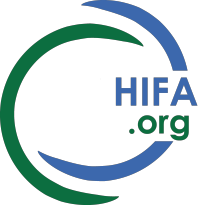I asked ChatGPT for help to describe a model open access system. I did prompt it with my own personal biases (as I have already expressed), so there is definitely an element of ChatGPT telling me what I want to hear.
I look forward to your comments. You may like to try ChatGPT with your own prompts and biases. (I see ChatGPT as a helpful tool for brainstorming and summarising, although it would be helpful if we can let each other know when we are using it.)
This is what it replied:
Talking Points: A Practical Approach to Funding Open Access in Health Research
1. Funders should pay APCs — but wisely.
*The cost of publishing open access is tiny compared to the overall cost of health research — often less than 1%.
*Yet, publication is where research becomes impact. It’s how evidence reaches practitioners, policymakers, and the public.
*That’s why APCs should be a standard budget line in research proposals, covered by funders up to a sensible cap.
*This ensures predictability, fairness, and visibility of funded work.
2. Capping APCs keeps the system fair and sustainable.
*Funders can limit reimbursement to a maximum (say, USD 1,500–2,000) and require publishers to justify their costs.
*This helps prevent excessive pricing while sustaining the genuine services journals provide — coordination of peer review, professional editing, and indexing.
*If publishers want to charge more, they can, but funders and authors are free to choose better-value options.
*Competition then drives efficiency, not prestige inflation.
3. We still need journals — and peer review.
*Preprints are wonderful for speed and transparency, but they aren’t enough for healthcare.
*Clinicians and health managers need reliable, edited, peer-reviewed evidence that’s easy to read and ready to apply.
*Preprints can complement journals, but they shouldn’t replace them. In healthcare, reliability and clarity save lives.
4. Refusing to pay APCs altogether risks backfiring.
*Some funders, like the Gates Foundation, have stopped paying APCs in protest at high costs.
*That frustration is understandable — but abandoning APCs entirely risks pushing authors toward obscure or lower-quality outlets.
*It’s like throwing the baby out with the bathwater. The real solution is to make APCs affordable, transparent, and equitable.
5. A pragmatic “funders-pay-with-conditions” model could work.
Here’s a simple, balanced formula:
*Funders pay APCs up to a reasonable cap.
*Publishers must disclose their costs and services.
*LMIC and unfunded authors get automatic waivers.
*Only journals meeting recognised quality standards (COPE, DOAJ) qualify.
*Funders reserve part of the OA budget for repositories, Diamond journals, and translation into local languages.
*This model is practical, equitable, and supports both global access and quality assurance.
6. The bottom line.
*Open access is essential — but it must also be fair, affordable, and trustworthy.
*We need the input of journals, but we need to avoid them overcharging for their input.
*By working together — funders, publishers, and researchers — we can open not just access, but impact.
I invite other HIFA members to critique the above.
What, for you, would the ideal OA system look like?
Best wishes, Neil
HIFA profile: Neil Pakenham-Walsh is coordinator of HIFA (Healthcare Information For All), a global health community that brings all stakeholders together around the shared goal of universal access to reliable healthcare information. HIFA has 20,000 members in 180 countries, interacting in four languages and representing all parts of the global evidence ecosystem. HIFA is administered by Global Healthcare Information Network, a UK-based nonprofit in official relations with the World Health Organization. Email: neil@hifa.org

